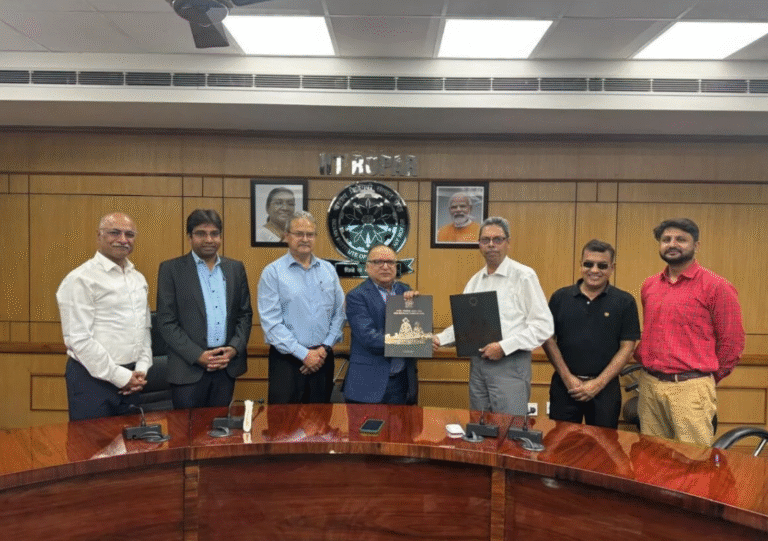
Raipur, Chhattisgarh – In a bold move to further accelerate industrial growth and solidify its position as a burgeoning investment destination, the Chhattisgarh government has been aggressively setting new deadlines and actively implementing its recently unveiled Industrial Policy 2024-2030. With a clear vision to transform the state into a self-reliant industrial powerhouse by 2047, the administration is pulling out all stops to attract investments across a diverse range of sectors, leveraging its rich natural resources and strategic policy framework.
Having witnessed the state’s industrial landscape evolve over the past fifteen years, this latest push feels different. It’s not just about offering incentives; it’s a comprehensive, multi-pronged approach that addresses the very core of investor concerns – ease of doing business, robust infrastructure, and a clear commitment to long-term growth.
The cornerstone of this renewed drive is the Industrial Policy 2024-2030, which came into effect in November 2024. This sixth iteration of the state’s industrial blueprint underscores a strategic shift towards high-growth and emerging sectors. Beyond the traditional strengths in agriculture and mineral-based industries, the policy actively courts investments in Information Technology (IT), Artificial Intelligence (AI), data centers, pharmaceuticals, green hydrogen, and the burgeoning semiconductor industry. Even tourism, often an overlooked economic driver, finds a prominent place in this ambitious vision.
The government isn’t just paying lip service to diversification. Concrete steps are being taken, evidenced by the impressive ₹4.4 lakh crore in investment proposals secured in the past two financial years alone. This includes a significant ₹1,63,749 crore garnered in the current fiscal year (2025) across 218 new projects. These figures speak volumes about the traction the new policy is gaining among potential investors.
During a recent Stakeholder Connect Workshop in December 2024, the state further solidified its commitment by issuing “Intent to Invest” letters worth over ₹32,000 crore. What’s particularly noteworthy is the nature of these investments, spanning new-age sectors like IT, AI, data centers, ethanol, electronics, and compressed bio-gas. This signals a clear departure from a purely resource-dependent industrial model.
Several key players are already making significant commitments. The Welspun Group’s ₹500 crore investment in plastics and textiles, Drools Company’s ₹625 crore expansion in the pet food sector (including a substantial solar power plant), and Kritech Technologies’ ₹600 crore foray into IT are just a few examples of the tangible impact of these policies. Even the healthcare sector is witnessing significant interest, with Bombay Hospital Trust proposing a ₹700 crore investment.
Crucially, the government recognizes that attracting investment is only half the battle. Sustaining it requires a conducive ecosystem. This is where initiatives like the Single Window System 2.0 come into play. This online portal, offering over 100 facilities from 16 different departments, aims to cut through bureaucratic red tape and streamline the process of obtaining approvals, licenses, and registrations. For someone who has witnessed the frustrations of navigating complex regulatory landscapes for years, this move is a welcome and necessary step.
Furthermore, the policy places a strong emphasis on inclusive growth. Special incentives are earmarked for state residents and marginalized communities, including SC/ST entrepreneurs, women, retired Agniveers, and ex-servicemen. This focus on equitable development is not just socially responsible but also strategically sound, fostering local ownership and participation in the state’s industrial progress.
Recognizing the vital role of small businesses and startups, the government has also allocated a ₹50 crore fund to support these burgeoning enterprises. Schemes like the Entrepreneurship Kranti Yojana, providing subsidized loans to educated unemployed youth, further underscore this commitment to nurturing local talent and fostering an entrepreneurial spirit.
The development of robust industrial infrastructure is another key priority. The state is actively developing new industrial parks and upgrading existing ones, with a particular focus on the Korba-Bilaspur-Raipur industrial corridor. Sector-specific parks, especially for agriculture and food processing, are also in the pipeline, aiming to capitalize on the state’s inherent strengths.
Moreover, the government understands that a skilled workforce is essential for industrial success. Partnerships with educational and vocational institutions are being forged to provide targeted skill development programs aligned with the needs of emerging industries.
While the ambitious targets and impressive early results are encouraging, the real test lies in consistent implementation and proactive engagement with investors. Over my years as a journalist covering this beat, I’ve seen many promising policies falter due to bureaucratic hurdles or a lack of sustained commitment. However, the current momentum in Chhattisgarh, coupled with the clear articulation of deadlines and a comprehensive policy framework, suggests a genuine intent to transform the state’s industrial landscape.
The focus on new-age industries, the emphasis on ease of doing business, and the commitment to inclusive growth paint a promising picture for Chhattisgarh’s industrial future. If the government can maintain this momentum and effectively address any challenges that arise, the coming years could indeed witness the state emerge as a significant and diversified industrial hub in India. The deadlines are set, the policies are in place, and the investments are flowing – now, all eyes are on Chhattisgarh to deliver on its ambitious promises. Sources and related content






